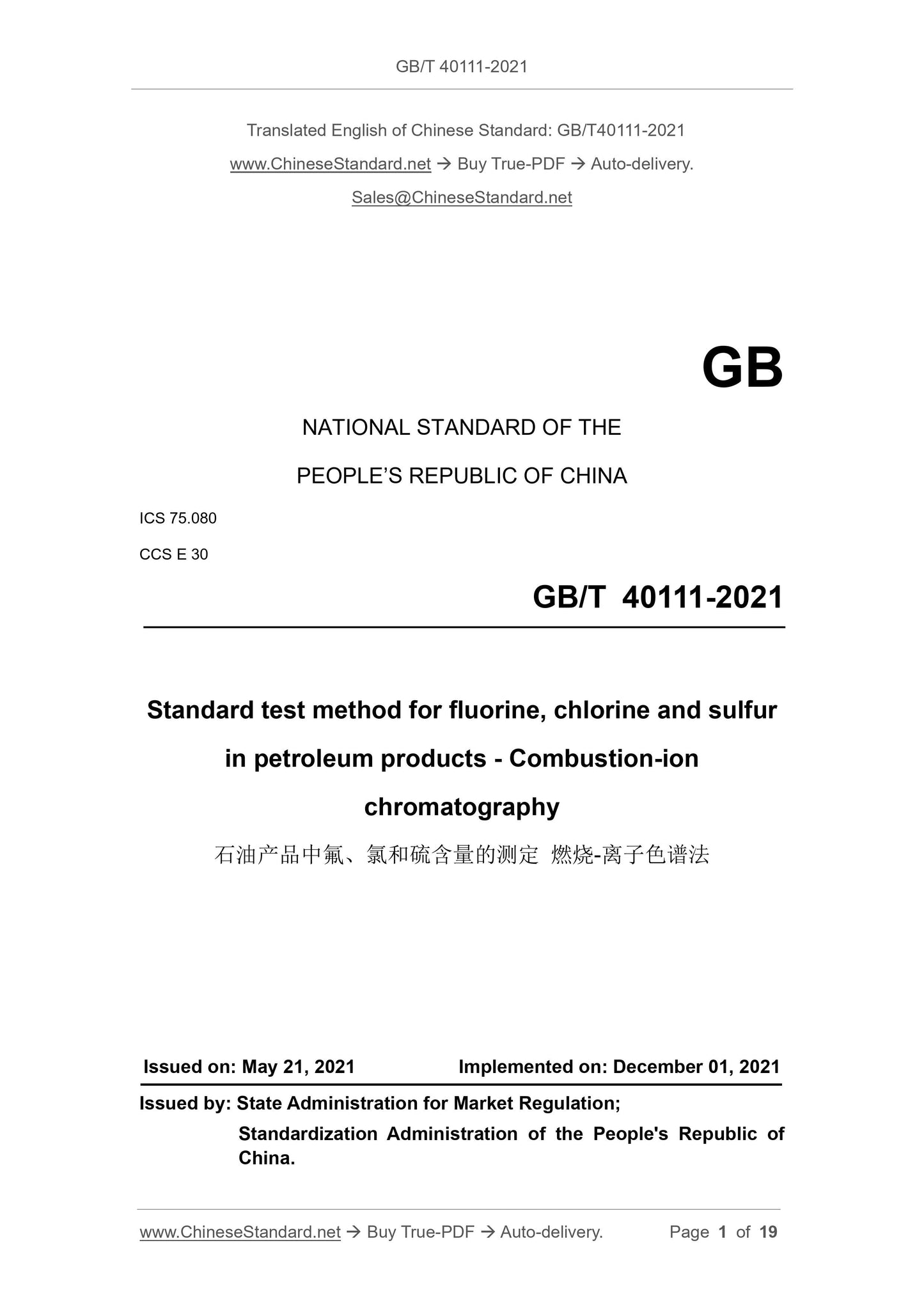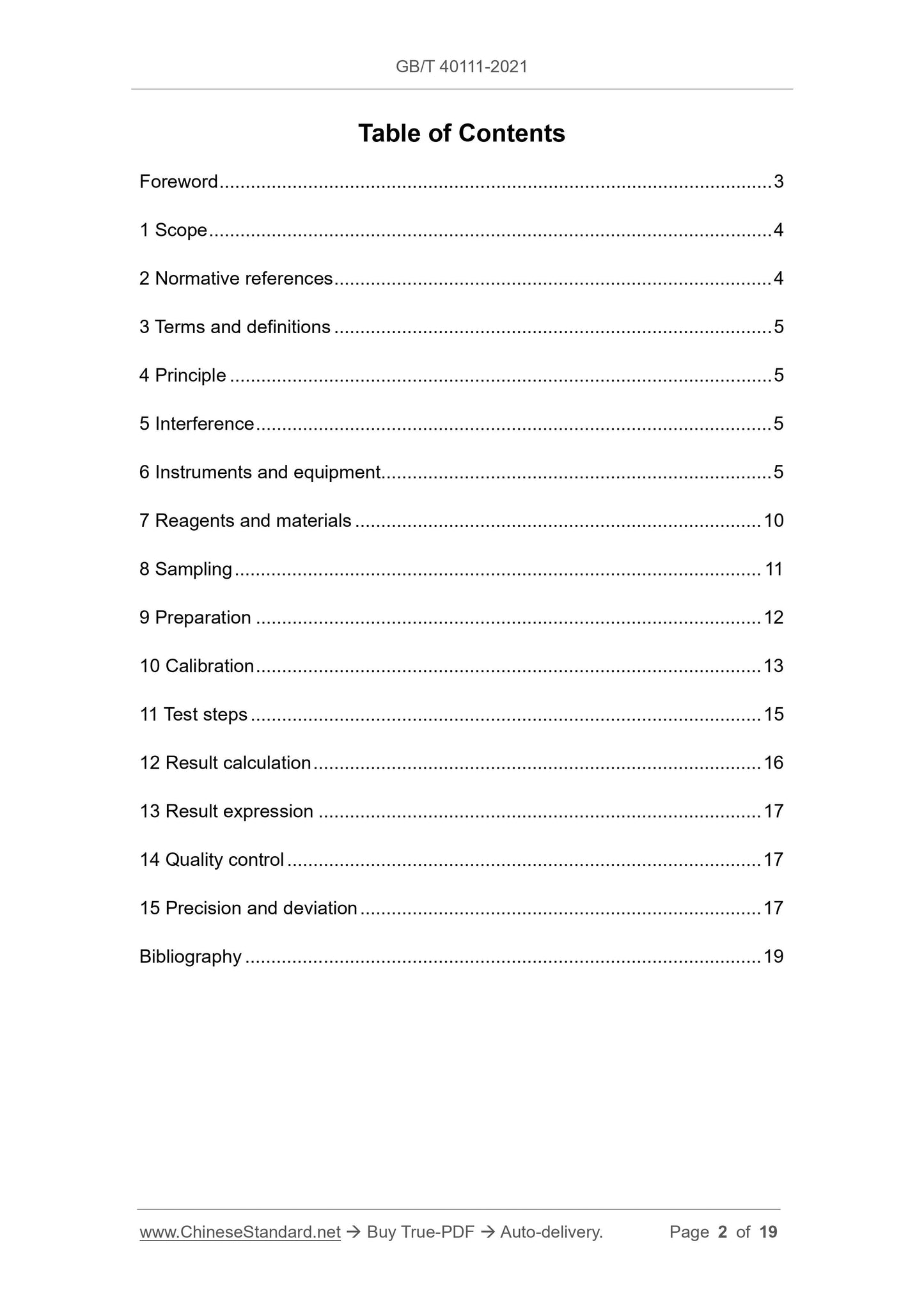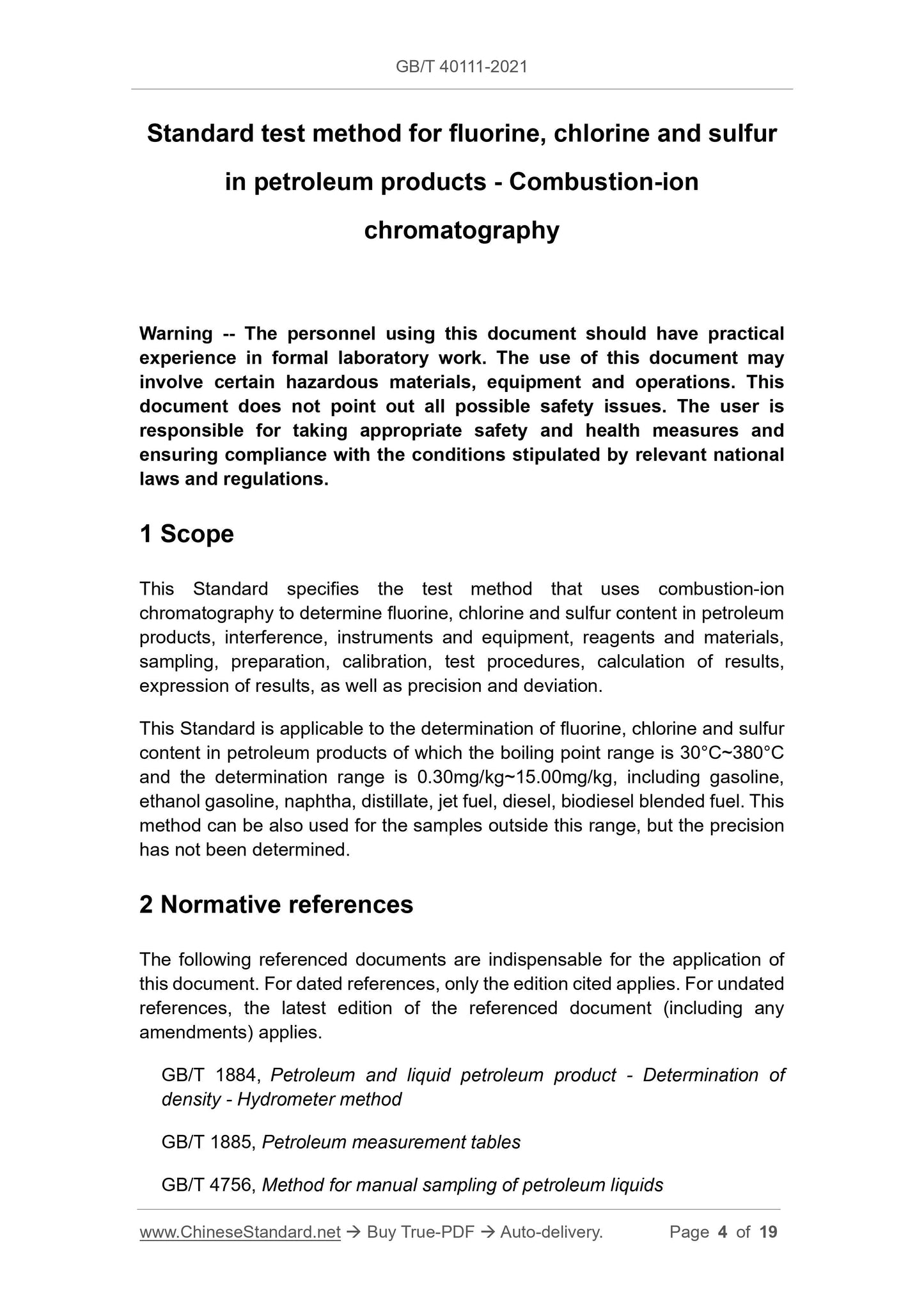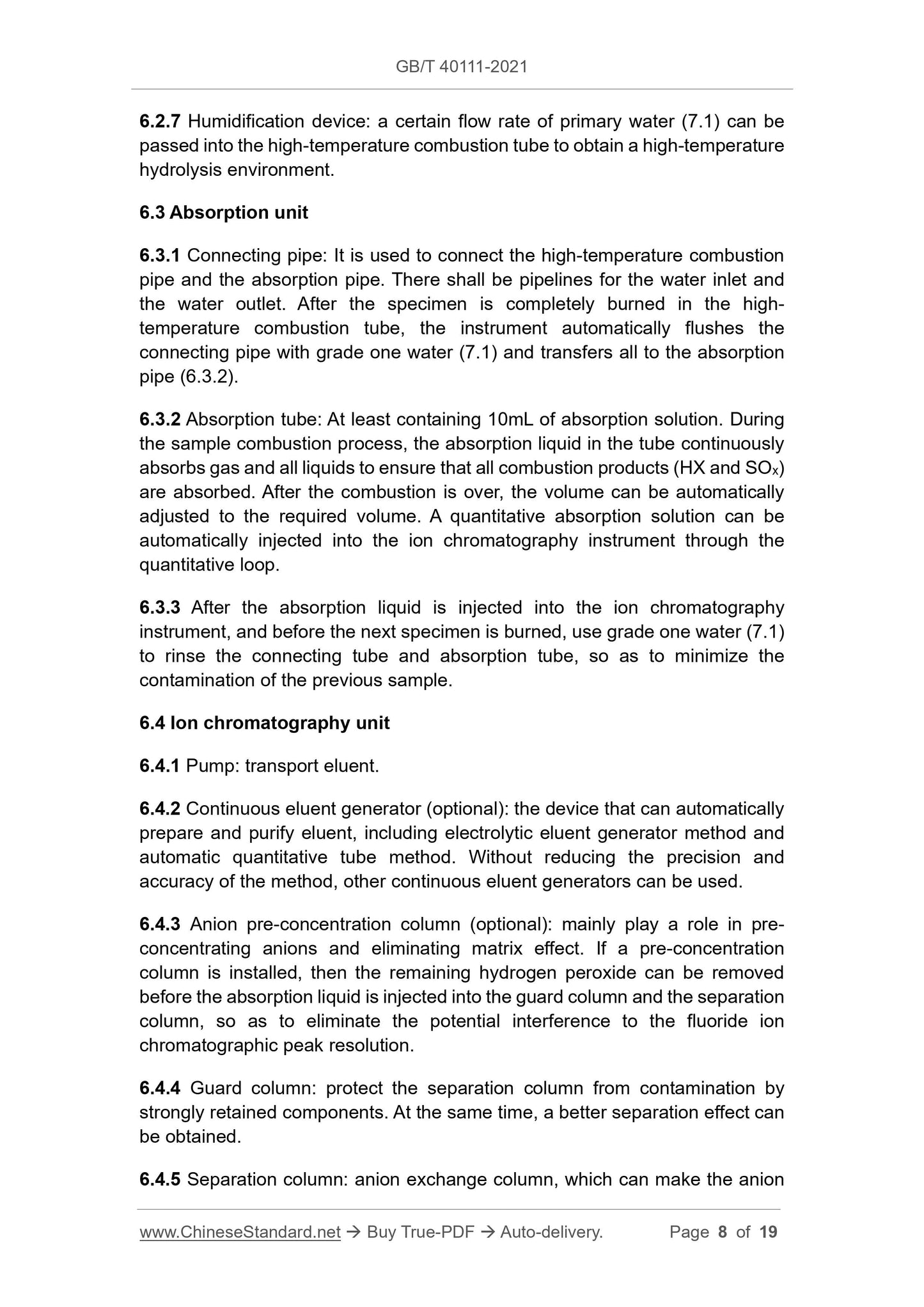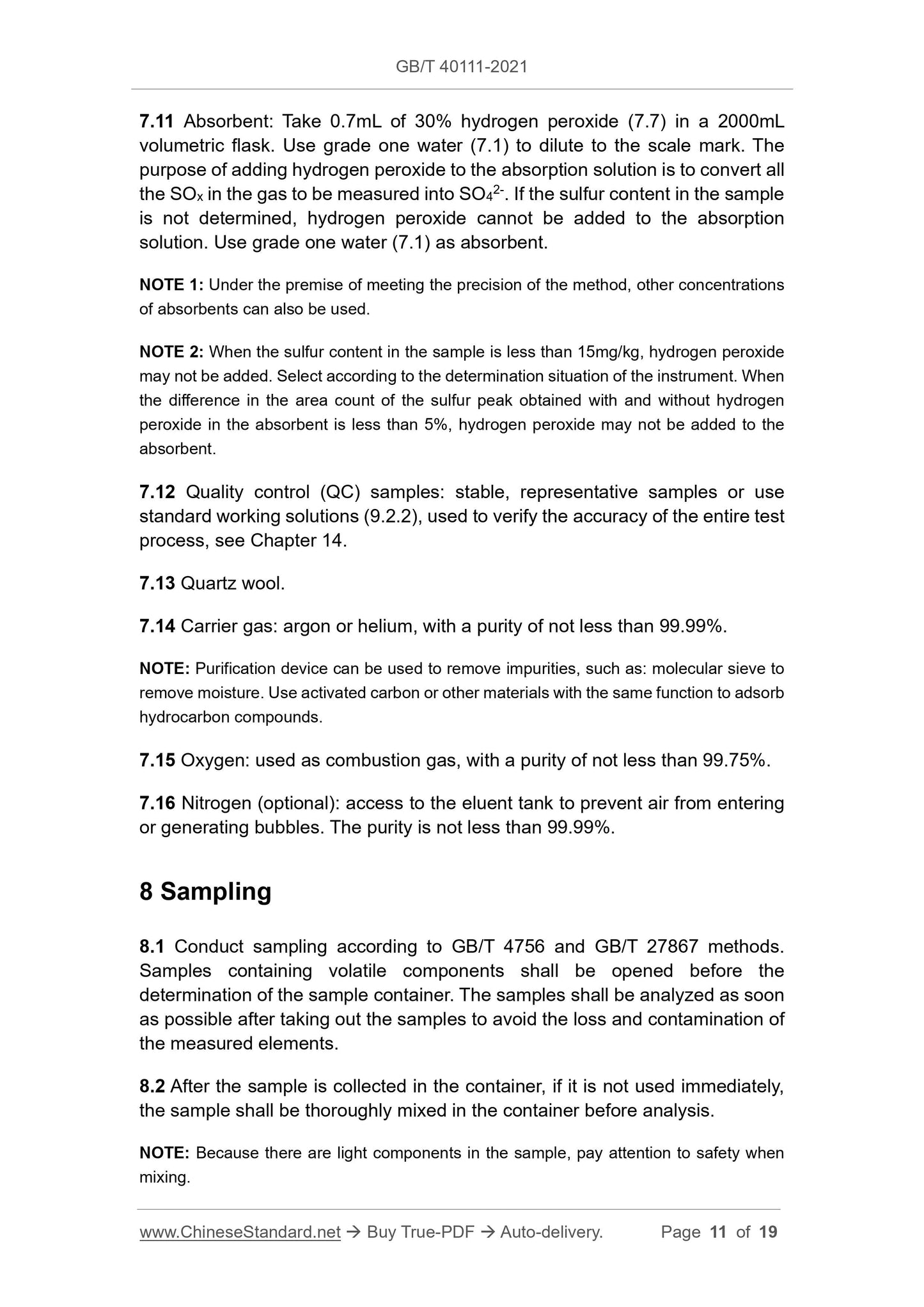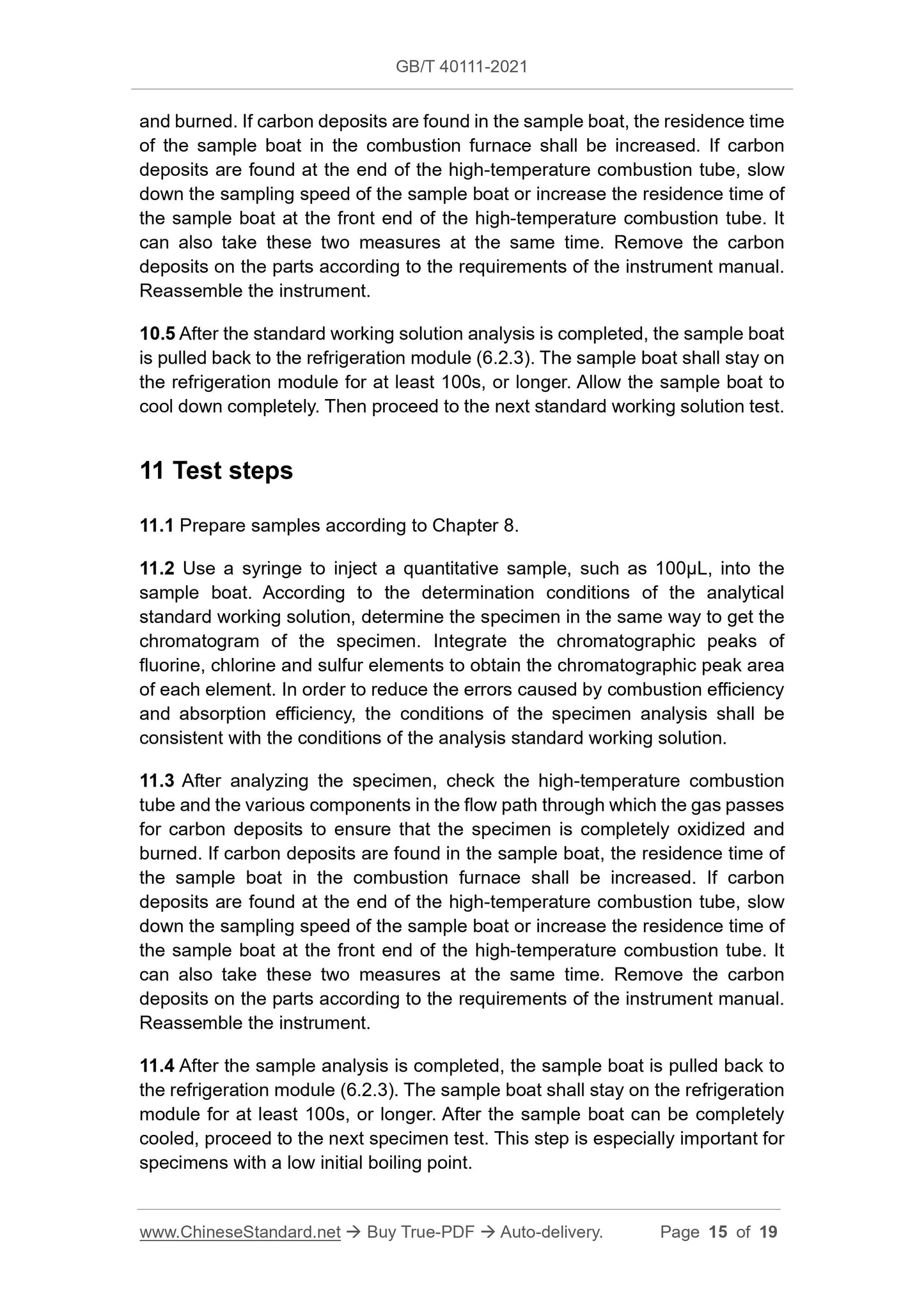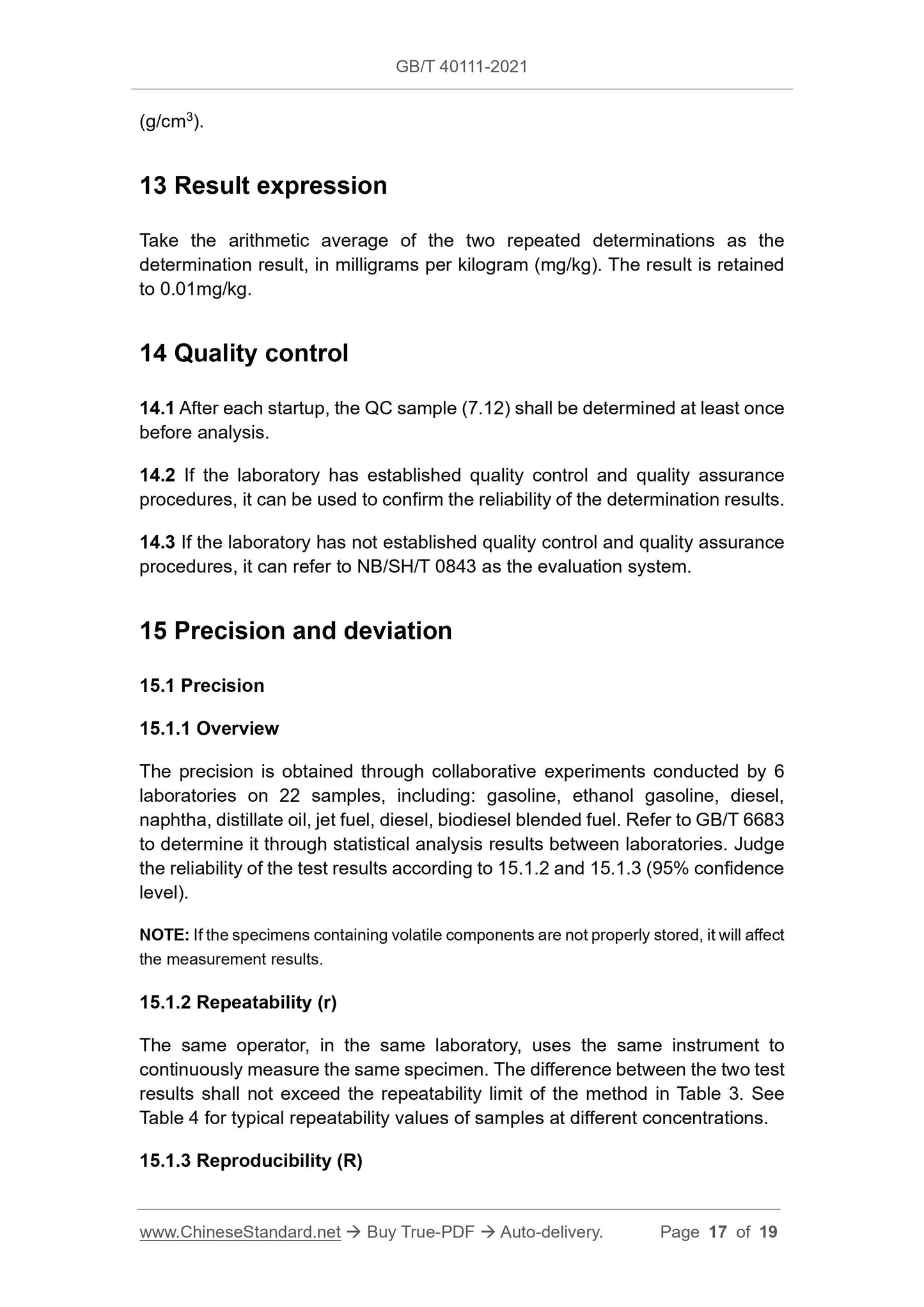1
/
of
7
www.ChineseStandard.us -- Field Test Asia Pte. Ltd.
GB/T 40111-2021 English PDF (GB/T40111-2021)
GB/T 40111-2021 English PDF (GB/T40111-2021)
Regular price
$230.00
Regular price
Sale price
$230.00
Unit price
/
per
Shipping calculated at checkout.
Couldn't load pickup availability
GB/T 40111-2021: Standard test method for fluorine, chlorine and sulfur in petroleum products - Combustion-ion chromatography
Delivery: 9 seconds. Download (and Email) true-PDF + Invoice.Get Quotation: Click GB/T 40111-2021 (Self-service in 1-minute)
Newer / historical versions: GB/T 40111-2021
Preview True-PDF
Scope
This Standard specifies the test method that uses combustion-ionchromatography to determine fluorine, chlorine and sulfur content in petroleum
products, interference, instruments and equipment, reagents and materials,
sampling, preparation, calibration, test procedures, calculation of results,
expression of results, as well as precision and deviation.
This Standard is applicable to the determination of fluorine, chlorine and sulfur
content in petroleum products of which the boiling point range is 30°C~380°C
and the determination range is 0.30mg/kg~15.00mg/kg, including gasoline,
ethanol gasoline, naphtha, distillate, jet fuel, diesel, biodiesel blended fuel. This
method can be also used for the samples outside this range, but the precision
has not been determined.
Basic Data
| Standard ID | GB/T 40111-2021 (GB/T40111-2021) |
| Description (Translated English) | Standard test method for fluorine, chlorine and sulfur in petroleum products - Combustion-ion chromatography |
| Sector / Industry | National Standard (Recommended) |
| Classification of Chinese Standard | E30 |
| Word Count Estimation | 14,170 |
| Issuing agency(ies) | State Administration for Market Regulation, China National Standardization Administration |
Share
